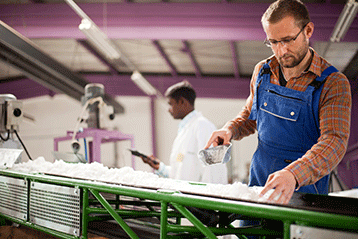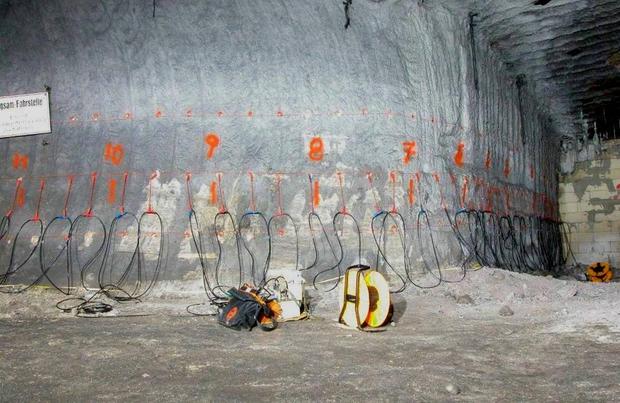Backfill refers to the filling of underground voids. This process securely stores mining and non-mining residues within a mine while simultaneously stabilizing the underground workings. Backfilled tunnels are no longer at risk of collapsing, and surface subsidence above the mine is slowed down or even halted. Backfilling can help reduce or avoid the need for tailings dams. Filter dust from waste incineration plants can be safely backfilled in salt mines, creating a classic win-win-win situation. Waste incineration plants can dispose of their residues, mining companies generate additional income, and the environment is not burdened by the filter dust. K-UTEC has decades of experience in backfilling, both in hydraulic backfilling and mechanical backfilling.
Initially, we analyze the residues in the laboratory and produce reports to determine their suitability for underground backfilling, taking into account hazardous substances regulations. We then examine whether unwanted reactions between the backfilled materials and the host rock could occur, such as hydrogen gas formation. Only completely safe mixtures are allowed for underground backfilling. In a subsequent step, we develop a tailored recipe for the backfill material mixture, which may include additional materials to bind the residues together and support their eventual solidification. These additional materials must be cost-effective and readily available on the market. We provide consulting services to waste producers and underground disposal facilities (UTD), conduct long-term safety assessments for the storage of chemotoxic waste in salt rock, and carry out environmental impact assessments. K-UTEC also develops recipes for mine grouts, backfilling materials, and dam construction materials. We provide certificates of the physical suitability of residues and backfilling materials. When it comes to backfilling, you can count on K‑UTEC.
Your contact person for backfill: Robert Quensel, Robert.Quensel@k-utec.de, Tel. +49 3632 610 144







